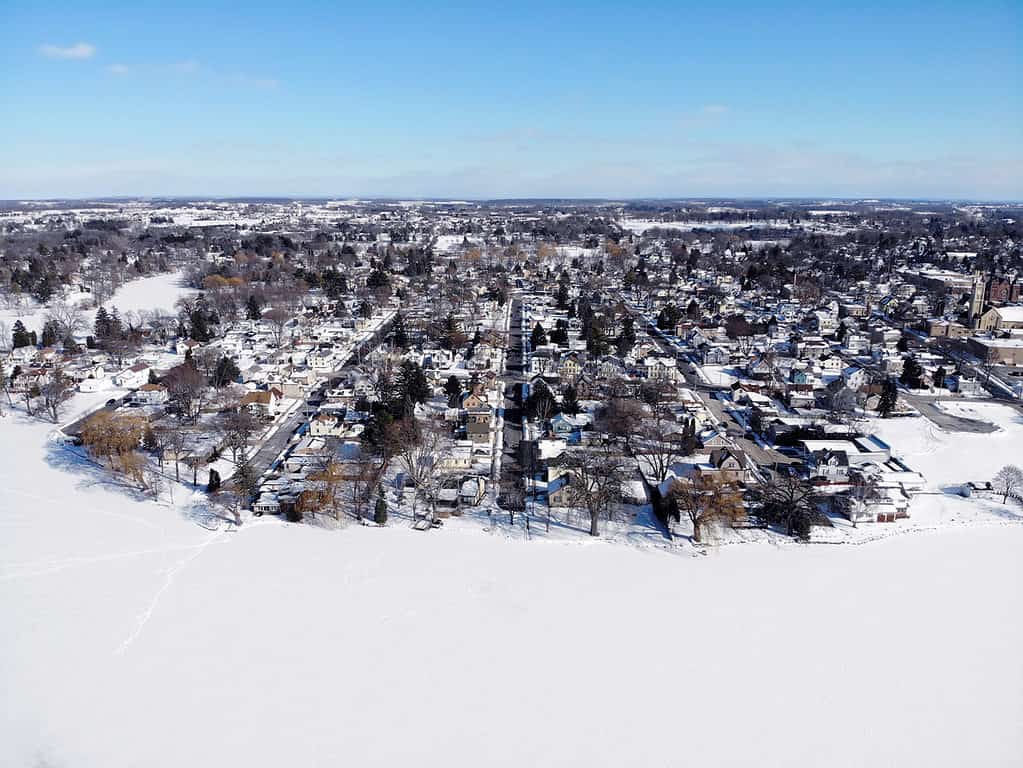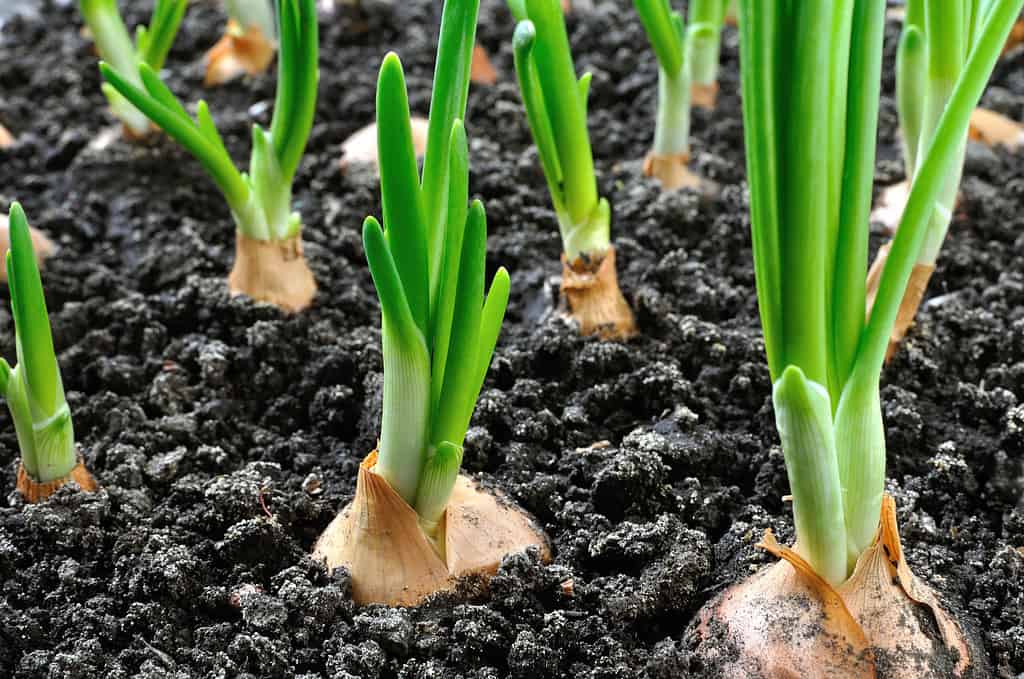Although Wisconsin is known for its dairy production, the state also produces large quantities of cranberries and ginseng as well. Although the state can have brutal winters, it’s possible for gardeners to successfully grow flowers and crops. Take a look at what Wisconsin gardeners need to know if they want to have a good start to the growing season!
Wisconsin’s Climate Conditions

Wisconsin’s climate provides warm summers and frigid winters.
©Szymon Raczkowiak/Shutterstock.com
| Climate in Wisconsin | |
|---|---|
| Köppen Climate Types | Hot summer humid continental in the south and west, but warm summer humid continental in the majority of the state |
| Annual Precipitation | 28 to 34 inches |
| Growing Season Length | 110 to 157 days |
| Plant Hardiness Zones | 3, 4, and 5 |
| Number of Sunny Days | 180 to 190 |
The state of Wisconsin has two Köppen climate types. They are a hot summer humid continental climate in the southernmost region of the state and some of the western part of the state along with a warm summer humid continental climate in the rest of the state.
That means the state can have warm summers along with brutally cold winters that experience a great deal of snow throughout the year. Wisconsin has a border with Lake Michigan to the east and Lake Superior to the north, and both Great Lakes influence the snowfall in their region.
Wisconsin does not receive a great deal of rain throughout the year. On average, the state sees between 28 and 34 inches of rainfall. That is still plenty of precipitation to help plants grow. Also, the state receives about 180 to 190 days of sun per year.
Despite having what looks to be a great area for growth, Wisconsin does have a few drawbacks. The first is that the growing season length is very short in some areas and only average in the best places. The average growing season is about 110 to 157 days in the state, giving Wisconsin gardeners a few months to grow their plants and vegetables.
Also, the state is home to plant hardiness levels 3, 4, and 5, making it so certain plants will grow easier in the state than others. All told, Wisconsin gardeners have their work cut out for them this season.
Weather That Troubles Wisconsin Gardeners

Heavy snow frequently strikes Wisconsin in the spring.
©justoomm/Shutterstock.com
A major issue that affects Wisconsin gardeners is the region’s low temperatures that linger throughout the spring. For example, Green Bay has an average high temperature of 25 °F in January with an average low of 10 °F! The coldest January in Wisconsin was in 1951 and featured temperatures that dropped to a frigid -45 °F in Eau Claire.
These temperatures don’t improve until late spring when the average low temperature becomes 35 °F in April! Even then, the threat of cold weather does not diminish until the following month.
Aside from cold temperatures, Wisconsin also must contend with snow. Depending on the locale, the state can receive anywhere from 30 inches and 160 inches of snow! Snow makes it hard for Wisconsin gardeners to plant their flowers and vegetables.
The danger from snow doesn’t pass once plants start growing, either. A snowfall can kill fledgling plants, and it can even impact the roots of perennial plants when it melts.
Snow falls in Wisconsin throughout March. While the temperature slowly becomes milder throughout this month, the weather remains unpredictable and capable of unleashing blizzards on the state.
Parts of Wisconsin must also contend with severe thunderstorms in the spring. In fact, it’s not unusual for tornadoes to impact the area, especially in late spring and early summer. On average, 23 tornadoes strike the state per year, but the majority of them are very weak. Still, tornadoes and their accompanying storms cause significant property damage and threaten lives, making them a serious challenge for gardeners.
Recent Weather and the Impact on Plants
The winter weather in Wisconsin is not ready to give way to spring. A blizzard struck Wisconsin in mid-April, dropping almost two feet of snow in some places. Of course, this state is well-practiced with winter weather, so they quickly recovered.
The state has also received some severe thunderstorms in March and April, prompting delays to the statewide tornado drill. The snow could delay some planting throughout the state, but many parts of the state don’t plant until May.
When Are the Last Frost Dates in Wisconsin?

Some places in Wisconsin have freezing temperatures until the end of spring!
©iStock.com/quinntheislander
Wisconsin is a rather cold state, so the last frost dates occur later in the spring than in many other places in the U.S. The last frost date is the approximate day of the year after which no more hard freezes occur. These dates are not always accurate, but they represent a good time for gardeners to consider planting. Take a look at some locations around Wisconsin and see when it’s safe to plant.
| City | Last Frost Date |
|---|---|
| Green Bay | May 13 |
| Superior | May 15 |
| Milwaukee | April 25 |
| Eau Claire | April 30 |
It’s important to take a look at the projections for your local area before planting anything. A two-week weather outlook can show if the temperatures are right for planting or not.
5 Plants Wisconsin Gardeners Should Plant (And When to Plant Them)

Onions are a great option for plants to grow in Wisconsin.
©yuris/Shutterstock.com
Wisconsin gardeners can grow a variety of different plants and vegetables throughout the state. Some varieties of plants are more easily grown than others. Consider these five vegetables that people can grow throughout the state. Also, remember that these planting dates are based on Green Bay’s climate.
1. Tomatoes
Tomatoes are a great crop to grow in Wisconsin since they come in many varieties, including several that flourish in this unique area. Start the seeds indoors between March 18 and April 1, and then plant them outside between May 20 and June 10 depending on the weather.
2. Cucumbers
You can grow cucumbers from seed starting in mid-April. Plant them outside with plenty of space to grow between May 28 to June 10.
3. Bell Peppers
Bell peppers are simple to grow and can be made into a variety of dishes. Start them from seeds in the first two weeks of March. Then, transfer the plants outside between May 21 and June 1.
4. Zucchini
The best idea is to start zucchini outdoors when the weather is warm. Plant this between May 27 and June 24.
5. Onions
You should plant your onion sets outside between April 15 and May 5. Make sure you mark where you put them in the ground!
These are some of the best and easiest plants to grow in Wisconsin. Just make sure you look ahead at the future weather forecast to make sure the weather won’t be freezing before you put these plants outside. Also, you can start growing them in a greenhouse and get them ready for the spring planting season.
Thank you for reading! Have some feedback for us? Contact the AZ Animals editorial team.








